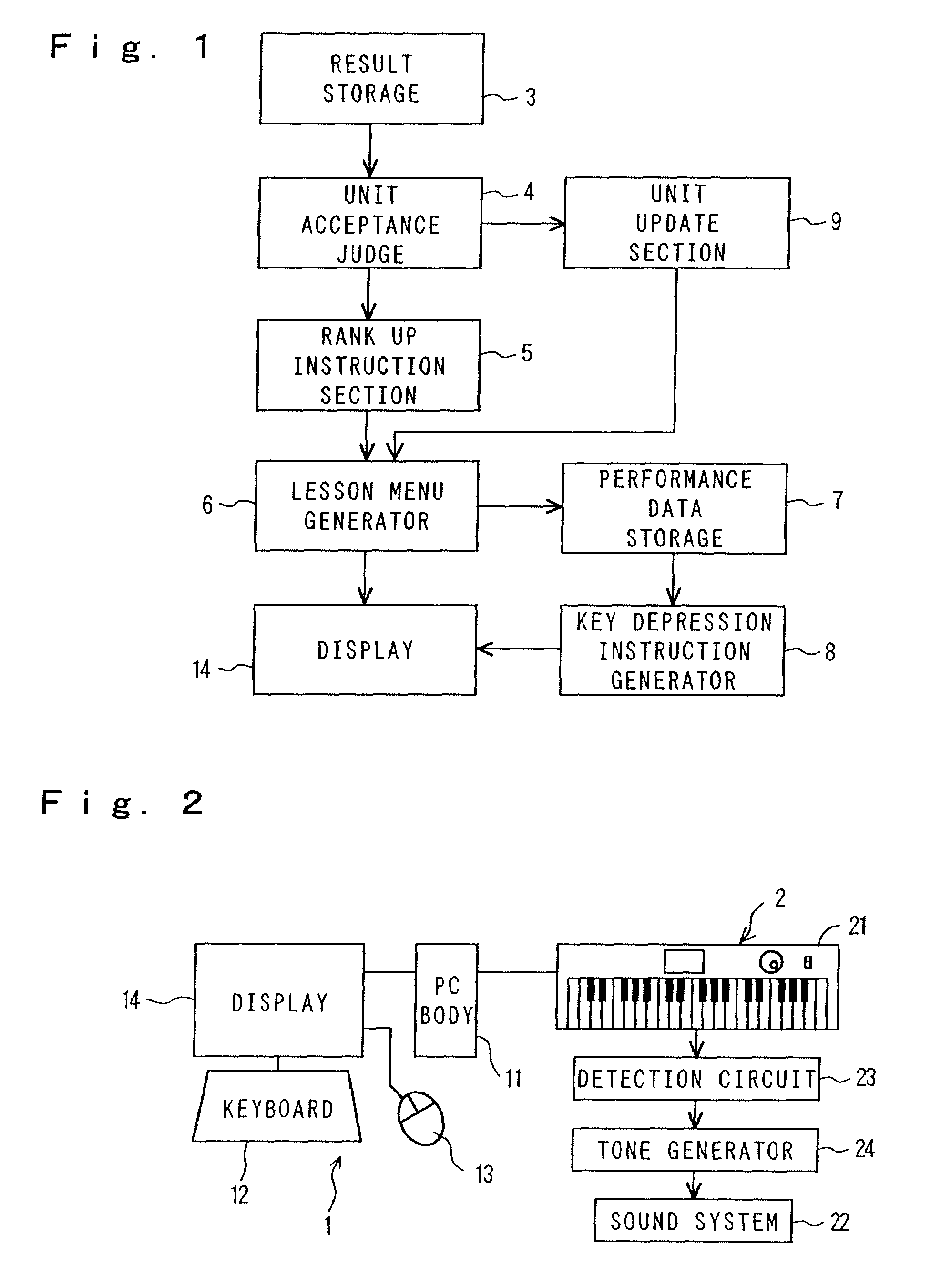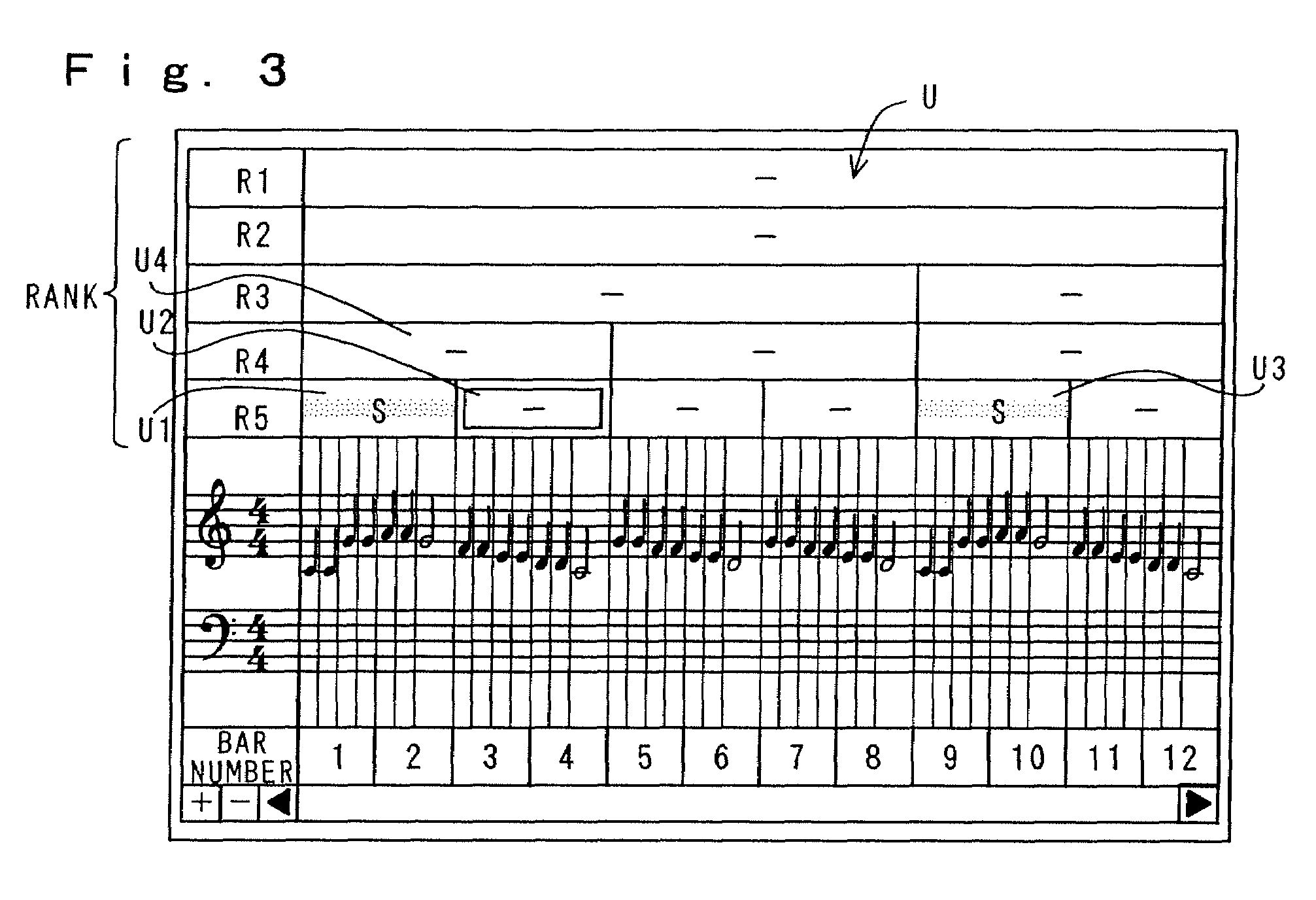Musical performance self-training apparatus
a self-training and music technology, applied in the field of music performance self-training apparatus, can solve the problems of difficult for a player to perform, inability to conduct efficient training, bored players,
- Summary
- Abstract
- Description
- Claims
- Application Information
AI Technical Summary
Benefits of technology
Problems solved by technology
Method used
Image
Examples
second embodiment
[0154]FIG. 11 is a flowchart showing this invention in which the designation of the unit can be changed while playing.
[0155]In the following description concerning to FIG. 11, same or similar operation is omitted to describe for avoiding repetition.
[0156]In step S103, it can be judged whether the training mode is the automatic mode or the manual mode based on the instruction information. An image for prompting an instruction of designation mode may be displayed on the display 14, so that a player can select the mode. In this case, the player can select the mode from the displayed selection image, using the keyboard 12 and the mouse 13.
[0157]When the automatic mode is instructed, process proceeds to step S104, to automatically set the lesson content. In other words, a unit for which the performance data is played is automatically set, according to the predetermined procedure. The automatic designation of unit has previously described in FIG. 5.
[0158]In the case of manual mode, contro...
third embodiment
[0169]The key depression instruction can be displayed various pattern or mode. In an embodiment described below contains a means for displaying the key depression instruction for various modes to be selected by the player's choice. FIG. 13 is a flowchart showing this invention.
[0170]In the following description related to FIG. 13, same or similar operation is omitted to describe for avoid repetition.
[0171]The performance data of the selected music at step S202 includes data for designating the key depression instruction display mode, other than the note information. The display mode is designated for each music.
[0172]When the music has been selected, process proceeds to step S203 to display a lesson menu on the display 14. The lesson menu is set such that one or a plurality of parts obtained by dividing performance data into a plurality of parts can be designated as one unit as described before. The designated unit can be extended stepwise corresponding to the progress of practice, ...
fourth embodiment
[0198]FIG. 22 is a flowchart showing this invention. In order to avid repetition of description, main portion of the embodiment is described below, referring to FIG. 22.
[0199]The performance result fetched into the PC body 1, then is written in a memory such as a RAM. The pitch in the performance result is compared with the performance data one by one, and when the instructed pitch in the performance data coincides with the pitch in the performance result, reproduction of the performance data proceeds forward, thereby to advance the performance instruction. However, when the both pitches do not coincides with each other, reproduction of the performance data cannot proceed forward. The performance result in which the pitch does not coincides with the pitch in the performance data is overwritten with the new data, that is deleted, at the point in time when the performance result in which the pitch coincides with the pitch in the performance data is fetched. Steps S5 to S7 are carried ...
PUM
 Login to View More
Login to View More Abstract
Description
Claims
Application Information
 Login to View More
Login to View More - R&D
- Intellectual Property
- Life Sciences
- Materials
- Tech Scout
- Unparalleled Data Quality
- Higher Quality Content
- 60% Fewer Hallucinations
Browse by: Latest US Patents, China's latest patents, Technical Efficacy Thesaurus, Application Domain, Technology Topic, Popular Technical Reports.
© 2025 PatSnap. All rights reserved.Legal|Privacy policy|Modern Slavery Act Transparency Statement|Sitemap|About US| Contact US: help@patsnap.com



